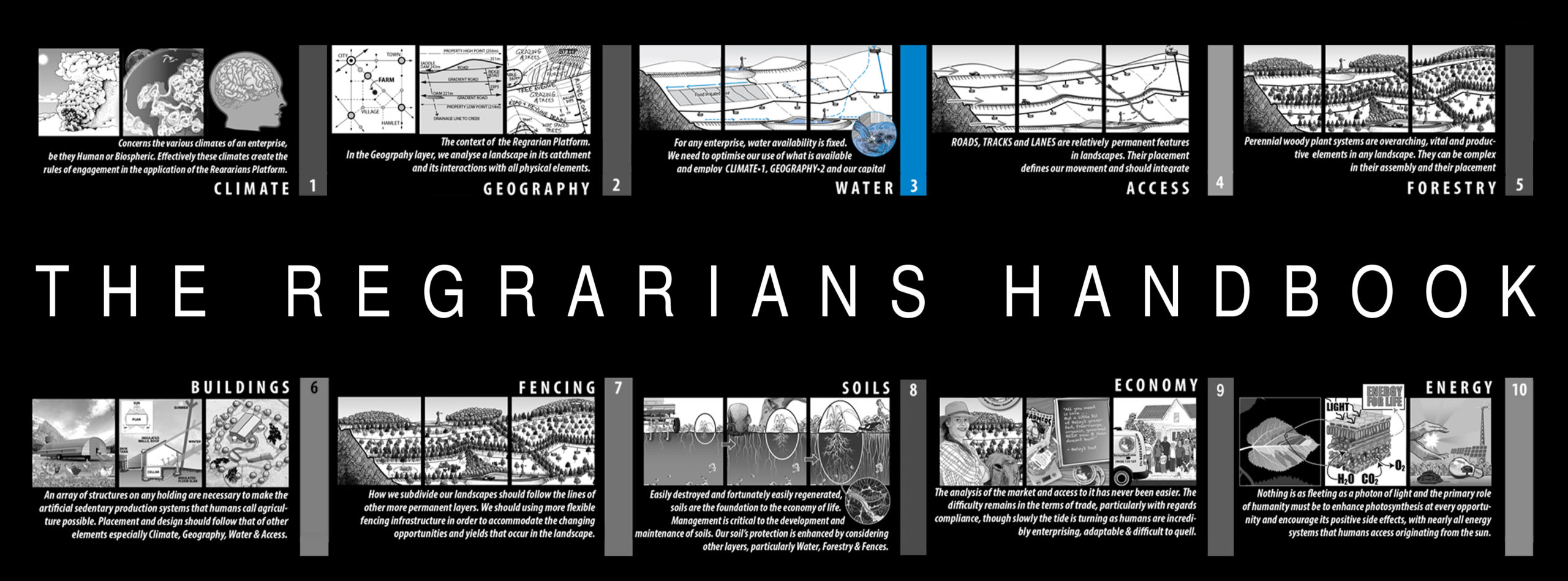The sections of 3.Water are as follows:
Introduction to the Water Layer
ENTERPRISE CONTEXT:
3.01 – Applying the Water Layer
3.02 – Regulatory Frameworks
CATEGORIES OF WATER:
3.03 – Humid Landscapes
3.04 – Semi-arid Landscapes
HYDROLOGY:
3.05 – The Effects of Raindrop Impact
3.06 – Analysing Your Part of the Catchment
3.07 – Reading Water in Your Landscape
3.08 – Keyline Landscape Zones
3.09 – ‘Basin of Relations’
QUANTITY:
3.10 – Needs and Supply
QUALITY:
3.11 – Testing and Monitoring
CONTROL:
3.12 – Drainage
3.13 – Collection from the Landscape
3.14 – Collection from Buildings/Structures
SOURCES:
3.15 – Streams
3.16 – Wells
3.17 – Bores
3.18 – Springs
STORAGE PLACEMENT:
3.19 – Tanks
3.20 – Dams
SMALL EARTH DAMS:
3.21 – Embankment Types
3.22 – Design
3.23 – Construction
3.24 – Lockpipe
3.25 – Overflow
3.26 – Trickle Pipe
3.27 – Thrust Block
3.28 – Liners
3.29 – Wildlife
3.30 – Silt Trap
TANKS:
3.31 – Steel
3.32 – Polymer
3.33 – Recycled
3.34 – Ferrocement
3.35 – Concrete
TREATMENT:
3.36 – Dissolved Solids
3.37 – Sand/Gravel
3.38 – Anaerobic
3.39 – Aerobic
3.40 – WET system
3.41 – Reverse Osmosis
3.42 – Magnetic
3.43 – Ultraviolet Light
3.44 – Chlorine
RETICULATION:
3.45 – Pipeline System Design
3.46 – Pumping Systems
3.47 – Livestock Water
3.48 – Pastures, Crops and Orchards
IRRIGATION:
3.49 – Keyline Flood
3.50 – ‘K-Line’
3.51 – Nursery
3.52 – Amphorae
3.53 – Drip
3.54 – Micro Sprinklers
3.55 – Sprinklers
FIRE PROTECTION:
3.56 – Fire Protection
RESTORATION:
3.57 – Riparian
3.58 – Valley Erosion
3.59 – Rip Rap
APPENDIX:
3.60 – Formulae & Conversions Appendices
References & Further Reading Glossary

